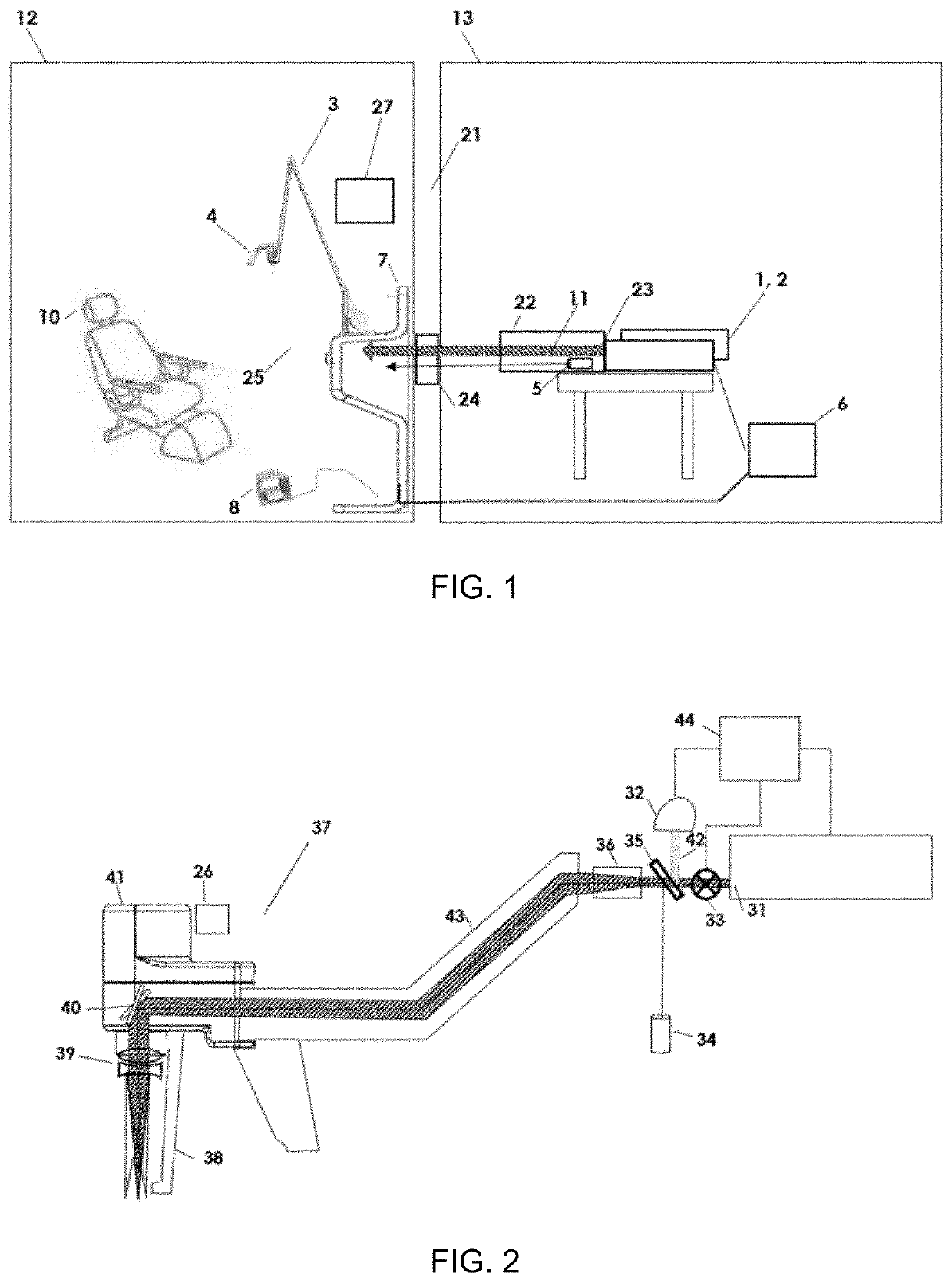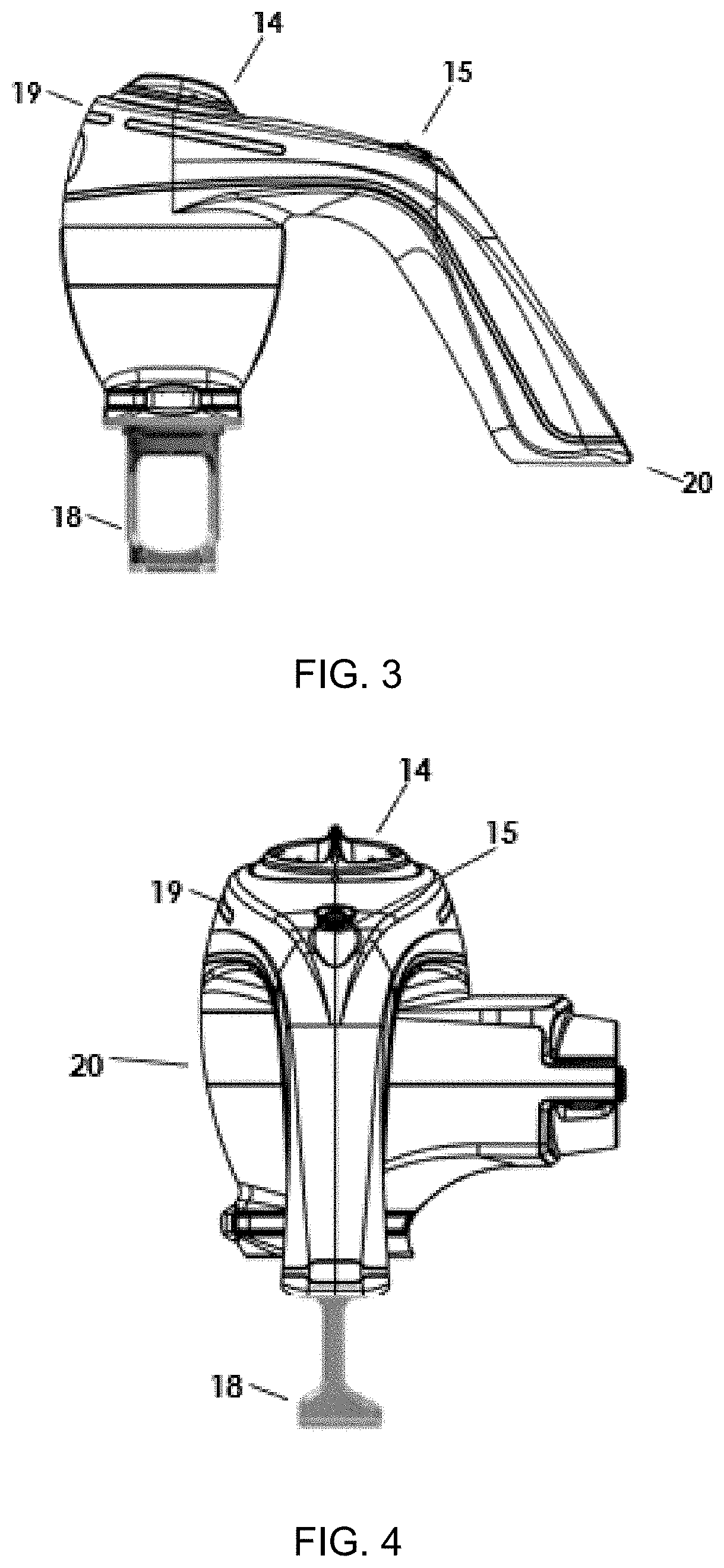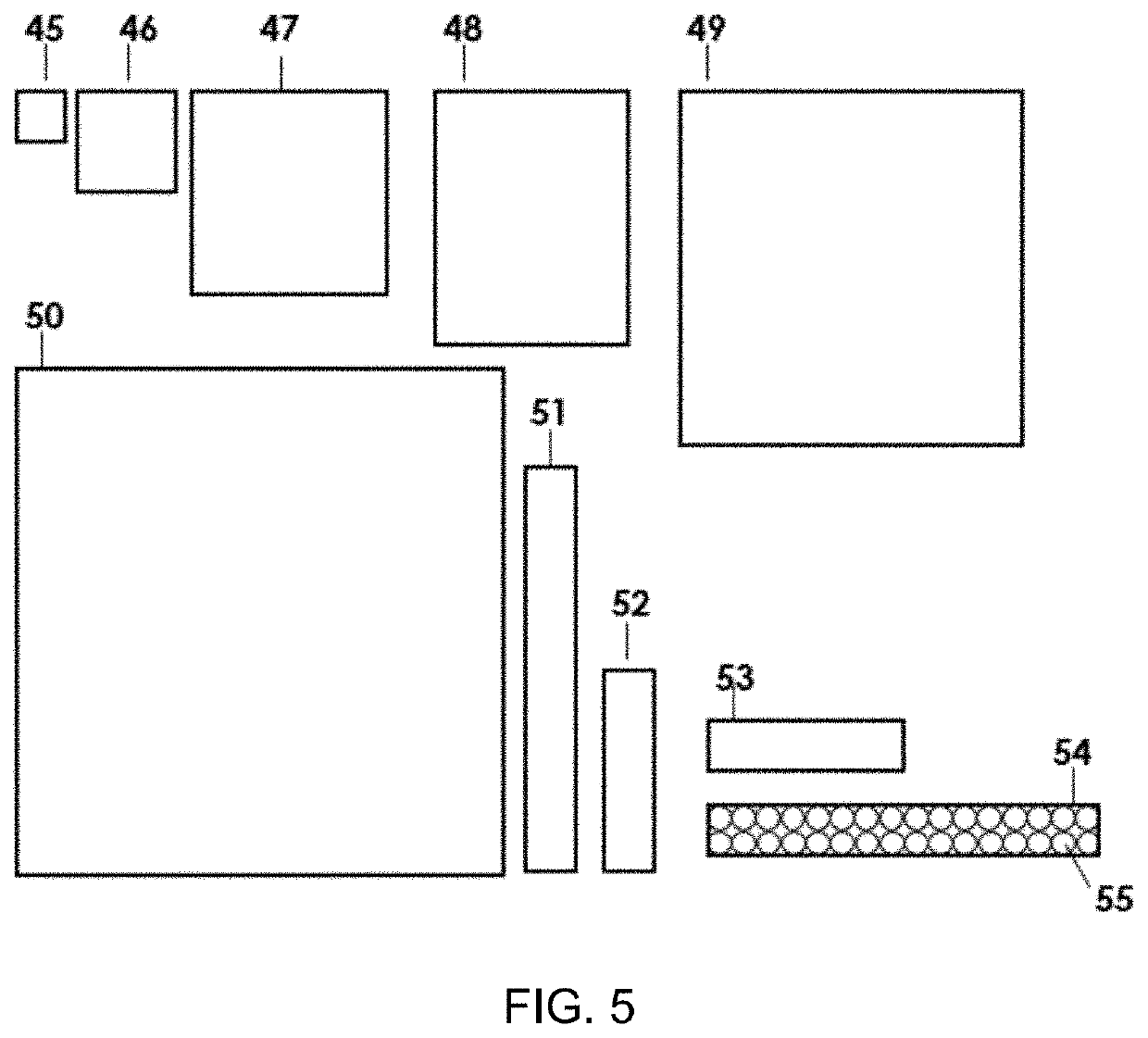Methods and apparatus for removal of skin pigmentation and tattoo ink
a technology of skin pigmentation and tattoo ink, which is applied in the field of skin pigmentation removal and tattoo ink removal methods and apparatuses, can solve the problems of difficult removal of lighter colours such as yellows and greens, laser radiation, and target colours, and achieve the effect of facilitating segment identification
- Summary
- Abstract
- Description
- Claims
- Application Information
AI Technical Summary
Benefits of technology
Problems solved by technology
Method used
Image
Examples
example 1
[0173]FIG. 1 of the accompanying drawings shows schematically a dermatological treatment facility in accordance with one embodiment of the present invention. The facility is provided in two adjacent rooms 12, 13 separated by a dividing wall 21. One of the rooms 12 is a treatment room; the other is a laser room 13 housing first and second treatment lasers 1, 2. In the present embodiment, the first laser 1 is a 800 nm Ti:Sapphire laser that produces ultra-short pulses, and the second laser 2 is a 1064 and 532 nm Nd:YAG laser. The Ti sapphire laser emits 100-30,000 femtosecond pulses, with 1-10 millijoule energies at 1 Khz pulse repetition rate. The Nd-Yag laser emits sub nanosecond pulses at similar energies and 500 Hz pulse repetition rates. It will be understood that different lasers may be used in other embodiments of the invention. An aiming beam 5 is coupled optically to the treatment lasers 1, 2 as described below to assist in placing a work head 4 as described in more detail be...
example 2
[0189]Using ultra-short and ultra-high intensity radiation in accordance with the present invention is beneficial for removing several colours with one wavelength, beyond linear absorption which is highly colour selective. When designing a new system one must determine the proper laser working point in order to achieve multi-colour pigment removal. A working point comprises fluence, pulse width and intensity. The intensity is required to be high enough for multi-colour removal, and it is usually determined by the combination of fluence (energy density) and pulse width. Fluence should be high enough to support the intensity, but not too high as to create excessive damage (typically about 0.5-10 J / cm2). Pulse width should be short but is usually limited by the specific laser design. Preferred pulse widths are of the order of about 0.5-30 picoseconds. Pulse energy is discussed below in Example 3. The optimal working point depends on the wavelength of the specific laser, the target colo...
example 3
[0196]The process of laser pigment removal, although targeting pigment, creates local heating in the tissue surrounding the pigment. Although local damage in tissue holding pigment is unavoidable, the surrounding tissue, not directly damaged by pigment radiation absorption, will suffer from secondary heating. The duration of local elevated heating is at the root of higher damage to surrounding tissue. In the following example we will quantify these effects.
[0197]During irradiation of pigmented tissue, the following occurs: Initially, on the time scale of laser pulse width, radiation is absorbed in parts of the tissue that are absorbing, usually in specific chromophores that are targeted for treatment. These can achieve very elevated temperatures (even thousands of degrees) in very short time scales of pico or nano seconds. This usually leads to plasma creation, mechanical breakdown and / or other violent events, which are usually the desired effect of the treatment. Nevertheless, afte...
PUM
| Property | Measurement | Unit |
|---|---|---|
| skin depth | aaaaa | aaaaa |
| pulse energy | aaaaa | aaaaa |
| pulse energy | aaaaa | aaaaa |
Abstract
Description
Claims
Application Information
 Login to View More
Login to View More - R&D
- Intellectual Property
- Life Sciences
- Materials
- Tech Scout
- Unparalleled Data Quality
- Higher Quality Content
- 60% Fewer Hallucinations
Browse by: Latest US Patents, China's latest patents, Technical Efficacy Thesaurus, Application Domain, Technology Topic, Popular Technical Reports.
© 2025 PatSnap. All rights reserved.Legal|Privacy policy|Modern Slavery Act Transparency Statement|Sitemap|About US| Contact US: help@patsnap.com



